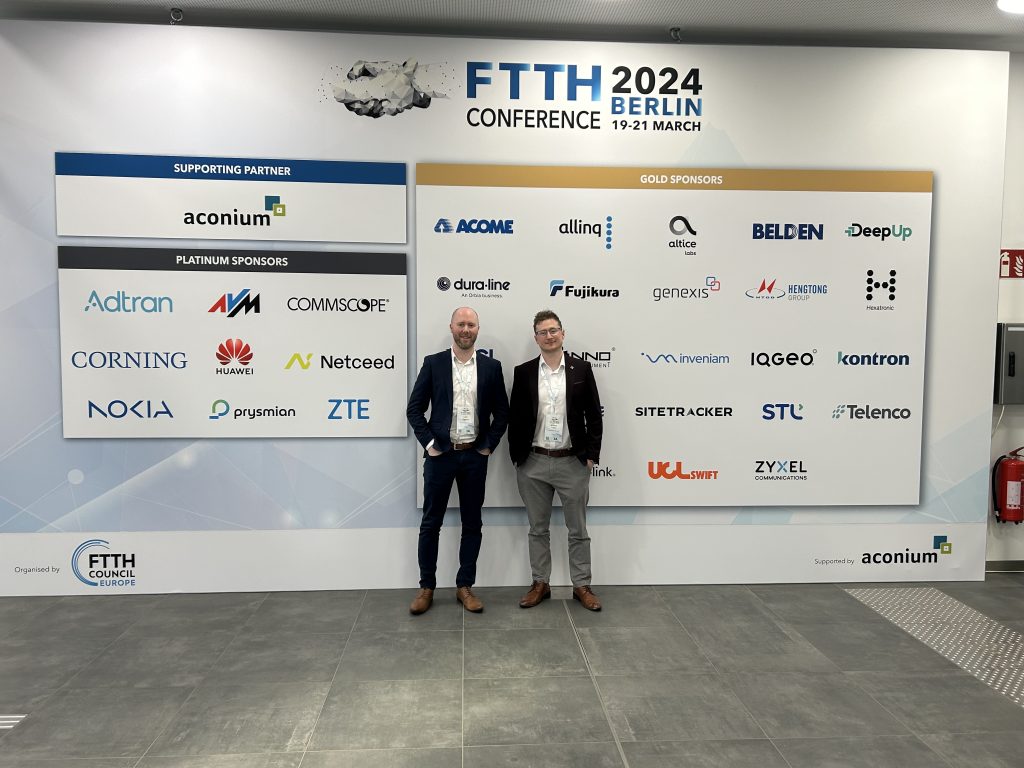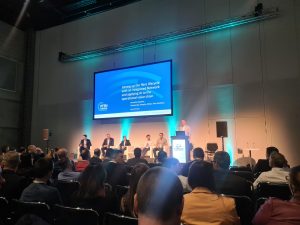Navigating the Future of Fiber: Insights from FTTH Conference 2024
At the forefront of fiber optics innovation in Europe lies the FTTH Conference 2024, a pivotal event hosted by the FTTH Council of Europe in Berlin. As a company rooted in the fiber industry, we always get so much from this annual event. And this year was no exception.
Attended by our experts Will Tobin and Colin Higgins, the event provided insights into the evolving landscape of fiber-to-the-home (FTTH) technology.

With over 3,300 attendees (not just from Europe), the FTTH Conference 2024 served as a hub for workshops, exhibitions, and networking events, offering a platform for industry leaders to look at the latest trends, challenges, and opportunities. For us, several key themes emerged that we think will shape the future of fiber deployment.
Mobile Mapping and Machine Learning (ML)
A standout workshop session from Cyclomedia, Deutsche Glasfaser & OpenFibre focused on Digital Twins highlighted the transformative potential of mobile mapping in enhancing efficiency and cost-effectiveness in fiber network deployment. It also delved into machine learning for identifying road surface types can lead to accurate cost estimates. Additionally, in the exhibition hall Inveniam showcased machine learning in their application in inspecting construction quality and assessing defects, highlighting the importance of automation in streamlining processes.
Integration of AI into the Fiber ecosystem

The integration of artificial intelligence (AI) into the fiber lifecycle emerged as a central focus, with industry leaders exploring how AI-driven solutions can optimize the operational value chain. Discussions ranged from automated design to augmented reality in construction, highlighting the potential of AI to revolutionize fiber network management and error detection processes.
We did note that some people are talking about AI when they are really talking about automation. Automation is very useful to streamline processes (especially in FTTH design), however, it does not verify data or help with smart data capture.
Sustainability and Environmental Considerations 
Additionally, discussions surrounding sustainability and environmental considerations underscored the importance of embracing greener alternatives and move away from traditional copper networks to FTTH. With a growing emphasis on reducing carbon footprints and power requirements, adopting an FTTH solution not only caters for the subscribers high demand for bandwidth but also aligns with our customers’ sustainability goals.
Given that many networks globally still rely on copper, FTTH is the superior choice for broadband needs. As the demand for bandwidth grows, FTTH offers reduced latency, enhanced customer experiences, and a more energy-efficient alternative to traditional copper solutions.
Challenges and Opportunities in Adoption Rates
Despite the rapid advancements in fiber technology, challenges remain in driving adoption rates, particularly in rural and underserved areas. The disparity in adoption rates across different regions necessitates a nuanced approach, informed by regulatory frameworks and streamlined processes.

As an engineering services company, we recognize the importance of technological advancements, regulatory frameworks, and global collaboration to navigate the complexities of fiber deployment. The insights we got from the FTTH Conference 2024 will help us support broadband rollouts for our USA customers. With a commitment to innovation and sustainability, we are surveying and designing infrastructure and delivering value and innovation to our customers around the world.
Open Access Models for the Future
The FTTH Council of Europe celebrates its 20th anniversary this year as we celebrate our 25th. [Read about our journey of growth and innovation in the last 25 years]
Indigo will certainly be using the insights and experience from the European market to shape the future of fiber connectivity as we help grow our USA customers.
